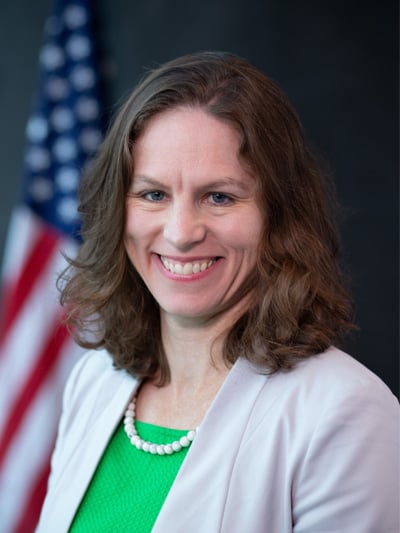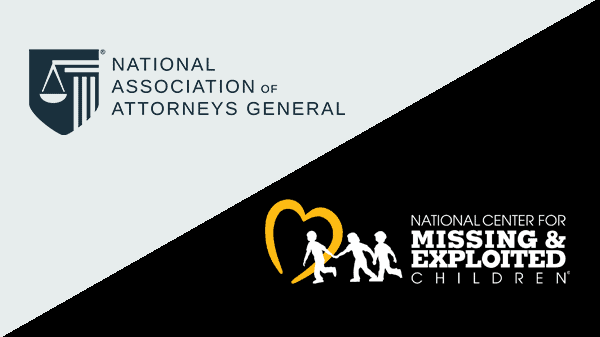-
 Coeditor, The Anticorruption Manual: A Guide for State ProsecutorsDirector, NAGTRI Center for Ethics and Public Integrity
Coeditor, The Anticorruption Manual: A Guide for State ProsecutorsDirector, NAGTRI Center for Ethics and Public Integrity
Amie Ely, Director, NAGTRI Center for Ethics and Public Integrity and NAGTRI Program Counsel
On Sept. 19, the President’s Council of Advisors on Science and Technology (PCAST) issued a 174-page report1 titled “Forensic Science in Criminal Courts: Ensuring Scientific Validity of Feature-Comparison Methods” (the PCAST Report or the Report).
It should be noted that PCAST Report does not bind any prosecutors or any courts, but may contain arguments that will be made by defense attorneys in cases that involve forensic evidence, particularly in the areas that PCAST argues should not be introduced into federal criminal trials.
As described at greater length below, the forensics disciplines that PCAST recommends that judges not admit into evidence are the following: (1) bite mark evidence, (2) firearms tool mark identification, (3) footwear analysis, and (4) hair analysis. PCAST also suggests that judges very carefully consider whether to admit DNA from complex-mixture samples and recommends that juries be advised that fingerprint examination has a high error rate.
A. Overview of PCAST
PCAST describes itself as “an advisory group of the nation’s leading scientists and engineers who directly advise the President and the Executive Office of the President. PCAST makes policy recommendations in the many areas where understanding of science, technology, and innovation is key to strengthening our economy and forming policy that works for the American people.”2 Since its formation in 2009, PCAST has issued a number of reports ranging from “Technology and the Future of Cities” to “Accelerating U.S. Advanced Manufacturing.”3
PCAST’s co-chair, Eric Lander, is the only member of PCAST to have been directly involved in forensic science.4 Lander testified for the defense in State v. Castro, 544 N.Y.S.2d 985 (Bronx S. Ct. 1989) in the late-1980s about the then-nascent field of DNA5 and is on the board of the Innocence Project. Months before PCAST was invited to consider the use of forensic science in federal criminal cases, Lander wrote an Op-Ed for The New York Times titled “Fix the Flaws in Forensic Science.”6
For the PCAST Report on forensic science, the members were advised by lawyers and judges PCAST refers to as “Senior Advisors.” Those senior advisors included federal judges who have argued that forensic science is used improperly in criminal proceedings, including Jed Rakoff from the Southern District of New York and Alex Kozinski of the Ninth Circuit Court of Appeals.
B. The PCAST Report
The Report considers whether these forensic feature comparison methods are “scientifically valid and reliable”: (1) DNA analysis of single-source and simple-mixture samples, (2) DNA analysis of complex-mixture samples, (3) bitemarks, (4) latent fingerprints, (5) firearms identification, (6) footwear analysis, and (7) hair analysis.7 It concludes that only items (1) and (4) are foundationally valid.
- DNA Analysis of Single-Source and Simple-Mixture Samples
The Report concludes that single-source DNA (a DNA sample from only one person) and simple-mixture DNA (DNA from two people, such as DNA from rapist and a victim obtained from a rape kit) are foundationally valid.8
- DNA Analysis of Complex-Mixture Samples
The Report is relatively agnostic about whether the analysis of DNA from “complex mixtures”—that is, from more than two contributors—is foundationally valid. It concludes that one “subjective” method, Combined-Probability-of-Inclusion, “is not foundationally valid,” but allows that courts might nonetheless consider admitting evidence obtained from that method if the analysts followed “rules specified” in a recent paper.9 A second “objective” method, Probabilistic Genotyping, is described as “a relatively new and promising approach” for which foundational validity has not yet been established.10
- Bitemarks
The Report concludes that bitemark analysis does “not meet the standards for foundational validity,” and that it is unlikely bitemark analysis could ever be validated.11
- Latent Fingerprints
The Report concludes that latent fingerprints are foundationally valid.12 It then recommends that jurors be advised, inter alia, that “false positive” error rates for fingerprint “matches” are as high as 1/18.13
- Firearms Identification
The Report concludes that firearms analysis—that is, determining whether a bullet was fired from a particular firearm—“currently falls short of the criteria for foundational validity” because only one “appropriately designed study” exists.14 The Report adds:
Whether firearms analysis should be deemed admissible based on current evidence is a decision that belongs to the courts. If firearms analysis is allowed in court, the scientific criteria for validity as applied should be understood to require clearly reporting the error rates seen in appropriately designed black-box studies (estimated at one in 66, with a 95 percent confidence limit of one in 46…).15
- Footwear Analysis
The Report does not address whether examiners can reliably determine “class characteristics” of shoes—e.g., if a shoeprint was made by a size 12 Nike Air Jordan released in 2014—but concludes that testimony that a particular piece of footwear—e.g., the size 12 Nike in the defendant’s closet—made a particular shoeprint is “unsupported by any meaningful evidence … and … not scientifically valid.”16 The Report did not include any specific directions to courts—unlike for firearms analysis.
- Hair Analysis
PCAST relied entirely on the materials regarding hair analysis that the U.S. Department of Justice (DOJ) gathered for the DOJ’s Proposed Uniform Language for Testimony and Reports for the Forensic Hair Examination Discipline for its section on hair analysis.17 While the Report does not explicitly conclude that hair analysis lacks foundational validity, it suggests that the studies the DOJ cited “do not provide a scientific basis for concluding…[that hair analysis employs] a valid and reliable process.”18
C. The Report’s Recommendations to the Federal Government
After concluding that several forensic science disciplines lack foundational validity, the Report makes recommendations to various federal science-based agencies, the FBI laboratory, the U.S. attorney general, and the federal bench. In summary, those recommendations are that more research needs to be done and that the science agencies and the FBI should secure millions of dollars to do that research; and that the attorney general not seek to admit, nor federal judges admit, evidence from the forensic disciplines that PCAST has determined lack “foundational validity.”
In other words, PCAST is recommending that the DOJ not seek to introduce evidence from the following disciplines: DNA analysis of complex-mixture samples, bitemarks, firearms identification, footwear analysis, and hair analysis.19 It is also recommending that federal judges—overruling precedent if necessary20—refuse to admit evidence from those disciplines.
D. Responses to the Report by Criminal Justice Stakeholders
The response to the PCAST Report has included the following:
- A statement by U.S. Attorney General Loretta Lynch, reported by the Wall Street Journal, stating that the U.S. Department of Justice “will not be adopting the recommendations” in the Report.21
- A release by the Federal Bureau of Investigation (FBI) criticizing the conclusions made by the Report regarding the admissibility of evidence.22
- A position statement criticizing the PCAST Report by the American Congress of Forensic Science Laboratories.23
- A press release criticizing the Report by the National District Attorneys Association (NDAA).24 In addition, the NDAA executive director appeared at the Sept. 30 meeting of PCAST, reiterating NDAA’s deep concerns with the Report.25
NAGTRI is planning to host a nationwide symposium on forensic science issues in the spring or summer of 2017. Prosecutors may contact Amie Ely, Director, NAGTRI Center for Ethics and Public Integrity, at aely@naag.org for information about the symposium and/or a longer explanation of the PCAST Report, additional information about PCAST, and an analysis of some of the issues raised by the Report.
Endnotes
- Executive Off. of the President, President’s Council of Advisors on Sci. & Tech., Report to the President, Forensic Sci. in Crim. Cts: Ensuring Sci. Validity of Feature Comp. Methods (hereafter Report) (Sept. 2016), https://obamawhitehouse.archives.gov/sites/default/files/microsites/ostp/PCAST/pcast_forensic_science_report_final.pdf.
- About PCAST, https://www.whitehouse.gov/administration/eop/ostp/pcast/about.
- PCAST Documents & Reports, https://www.whitehouse.gov/administration/eop/ostp/pcast/docsreports.
- A second member, S. James Gates, Jr., is a staff member of the National Commission on Forensic Science, which was established by the U.S. Department f Justice in 2013. Gates is a theoretical physicist who studies string theory. His 101-page C.V. (http://www.umdphysics.umd.edu/images/CV/gates_cv.pdf) reveals no familiarity with—or even interest in—any areas of forensic science.
- While there was no appeal in Castro, the New York Court of Appeals later “disagree[d] with the conclusion of the court in People v. Castro . . .” People v. Wesley, 83 N.Y.2d 417, 436 n.2 (NY 1994) (Kaye, C.J., concurring).
- Eric S. Lander, Fix the Flaws in Forensic Science, N.Y. Times, Apr. 21, 2015, http://www.nytimes.com/2015/04/21/opinion/fix-the-flaws-in-forensic-science.html.
- Report at 67-122.
- Id. at 69.
- Id. at 82.
- Id. See also id. at 148.
- Id. at 87, 148.
- Id. at 149.
- Id. at 96, 101. This data is from an unpublished study, the authors of which concluded that the majority of the incorrect matches were as a result of clerical errors and were “caught” by a second examiner—a verification system in use by the FBI.
- Id. at 112.
- Id. at 112., 150.
- Id. at 150.
- DOJ’s Forensic Science Discipline Review is studying the areas of forensic science in the PCAST Report, but with a more transparent procedure to solicit feedback and criticism from the stakeholders who will be impacted by its recommendations.
- Id. at 120.
- While the Report does not explicitly conclude that hair analysis lacks foundational validity, it strongly suggests that conclusion—and it is difficult to see how, under the PCAST “standards,” hair analysis would be considered foundationally valid.
- Id. at 143-44.
- Gary Fields, “White House Advisory Council Report is Critical of Forensics Used in Criminal Trials,” Wall St. J. (Sept. 20, 2016) at ____. Ms. Lynch is quoted as saying, “We remain confident that, when used properly, forensic science evidence helps juries identify the guilty and clear the innocent, and the department believes that the current legal standards regarding the admissibility of forensic evidence are based on sound science and sound legal reasoning.”
- F.B.I., Cmts on: President’s Council to Advisors on Sci. & Tech. Rep. to the President (Sept. 20, 2016), https://www.fbi.gov/file-repository/fbi-pcast-response.pdf/view.
- Am. Cong. of Forensic Sci. Laboratories, Position Statement (Sept. 21, 2016), http://forensicfoundations.com/resources/Documents_OPC/2016_0921_PS_PCAST.pdf.
- Nat’l Dist. Attys. Assoc., Nat’l Dist. Attys. Assoc. Slams President’s Council of Advisors on Sci. & Tech. Rep. (Sept. 2, 2016), http://www.ndaa.org/pdf/NDAA%20Press%20Release%20on%20PCAST%20Report.pdf.
- Testimony of Kay Chopard (Sept. 30, 2016), http://www.ndaa.org/pdf/PCAST%20Statement%209%2030%2016%20FINAL.pdf.




